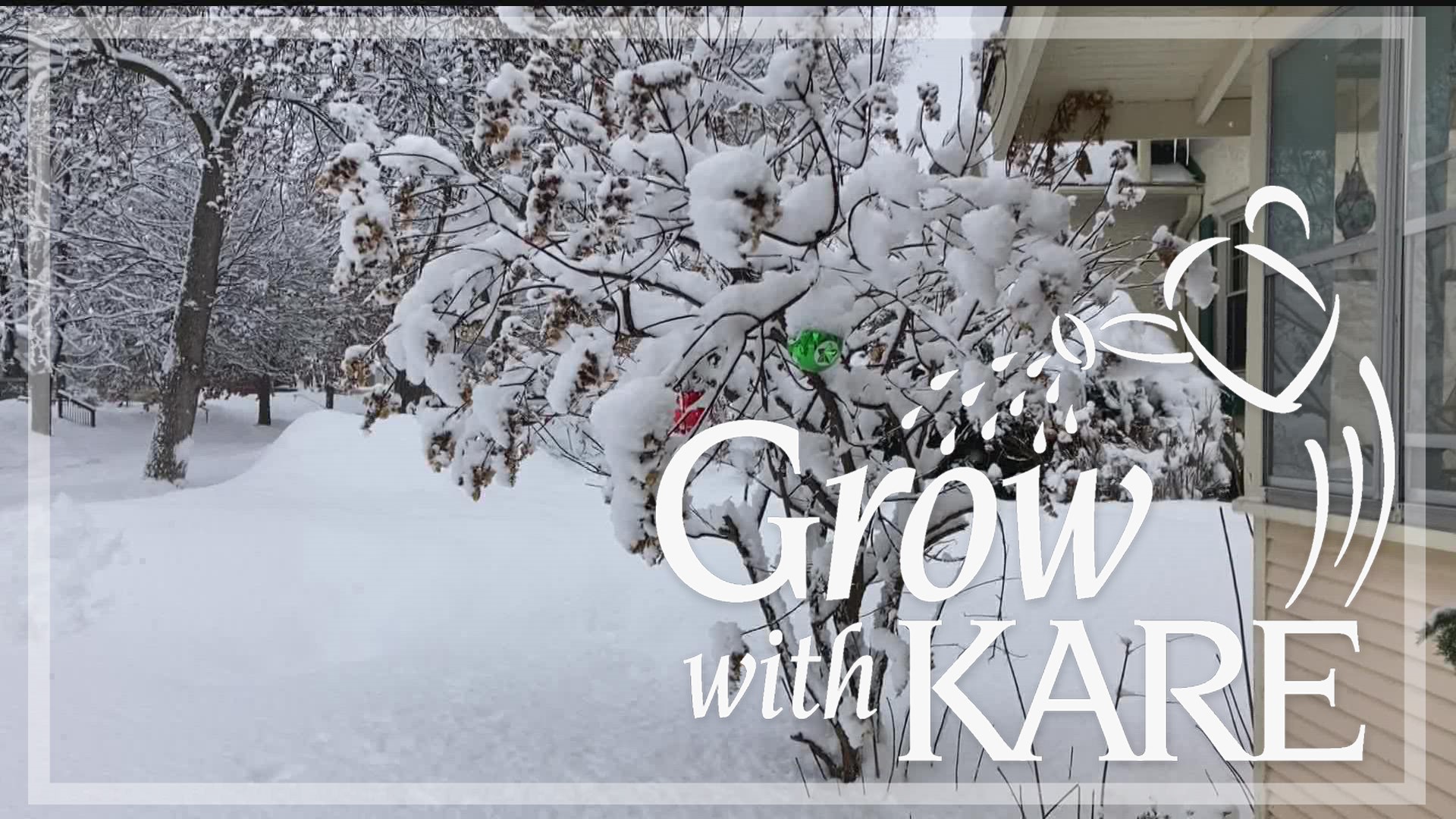GOLDEN VALLEY, Minn. — There’s no doubt about it, we’ve had a lot of snow this year.
Some of your trees and shrubs might not be taking it so well.
A lot of you have posted pictures of your once upright branches that are now nearly touching the ground.
So what should you do about it?
Well the answer right now is more what you shouldn’t do.
During a heavy snow, you can gently shake or brush off the branches.
When brushing your tree, use a soft broom and always sweep upward rather than from the top down.
Now that that snow has hardened it will likely do more harm than good.
With snow crusted on, it’s easy to damage your plant in the process of trying to remove the snow.
What you can do is simply wait for a thaw or for spring.
At that point when the snow melts your branches should return to upright on their own.
According to research from the U of M, trees that tend to suffer the worst damage as a result of snow and ice are multiple leader, upright evergreens like arborvitae and juniper, and multiple leader or clump trees like birch.
On these trees, locating and pruning weak-jointed branches before they become a problem is important.
Slow-growing trees like oak are less likely to lose limbs.
Wrap relatively small trees together or tie the leaders with strips of carpet, strong cloth or nylon stockings two-thirds of the way above the weak crotches.
Remove these wrappings in spring to prevent girdling, and to allow free movement of the stem.
Proper pruning to eliminate multiple leaders and weak branch attachments, will reduce snow and ice damage.
Watch more of Grow with KARE:
Watch the latest gardening tips and tricks in our YouTube playlist and don't forget to join the Grow with KARE Facebook group:

